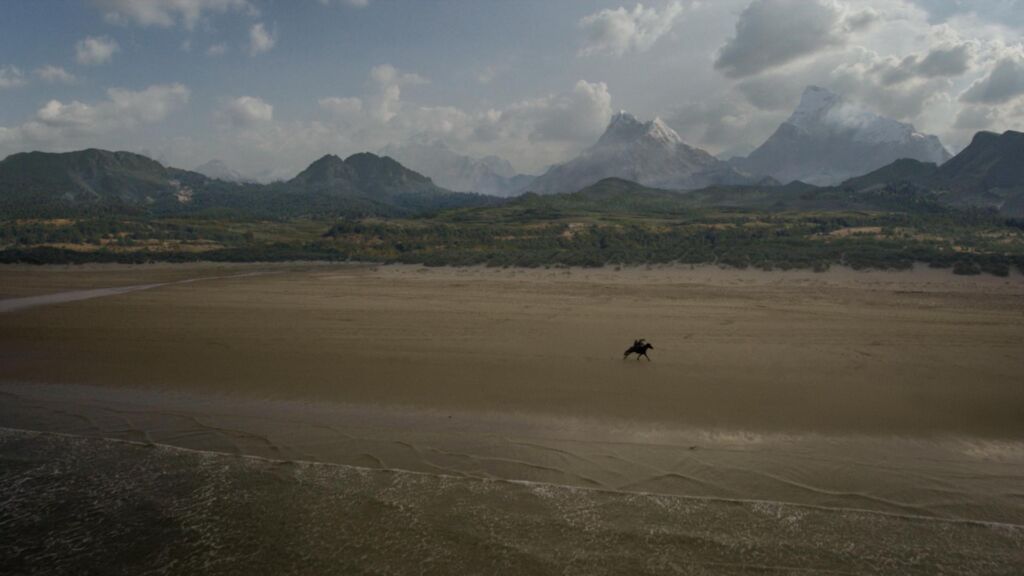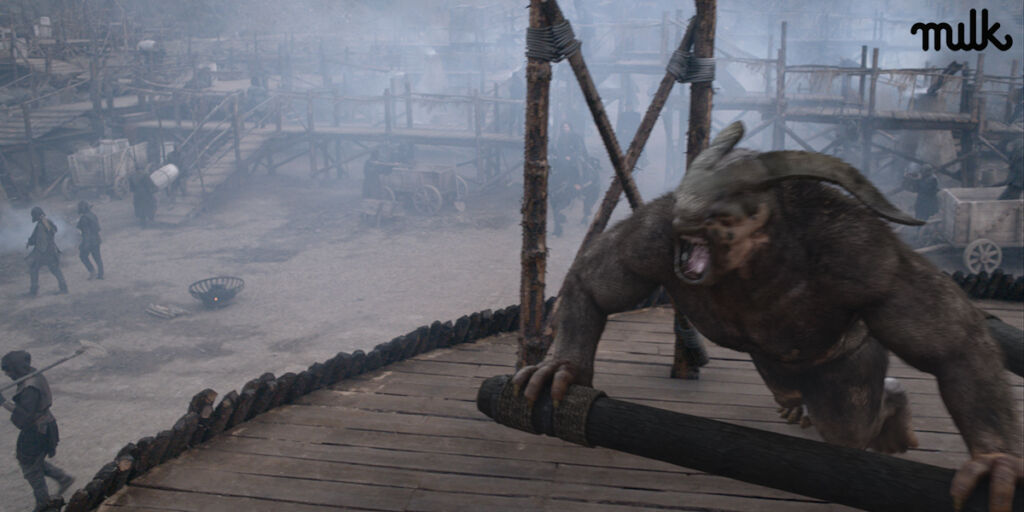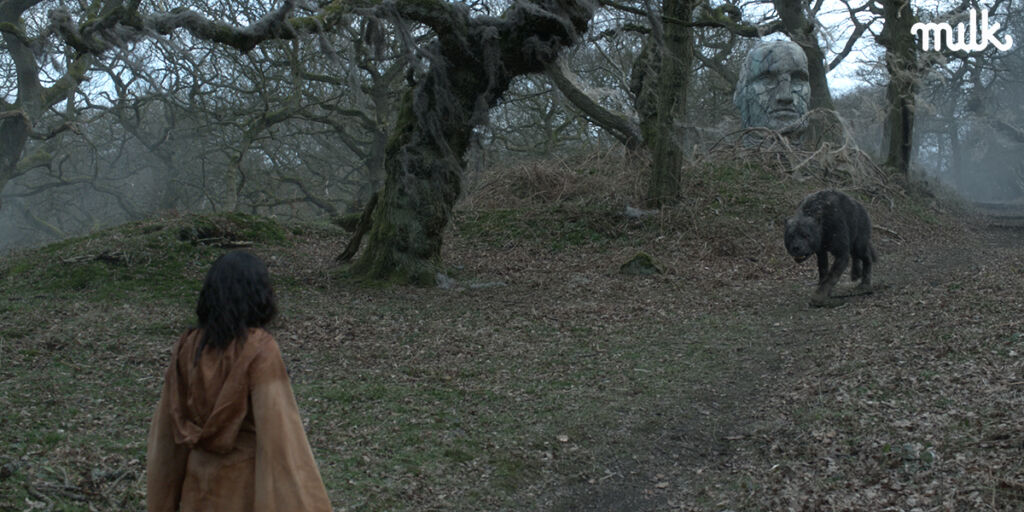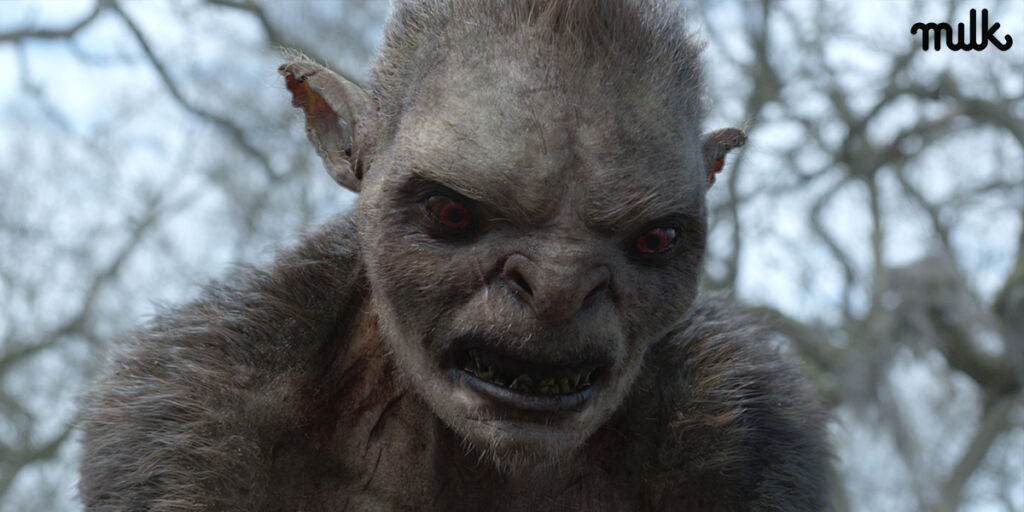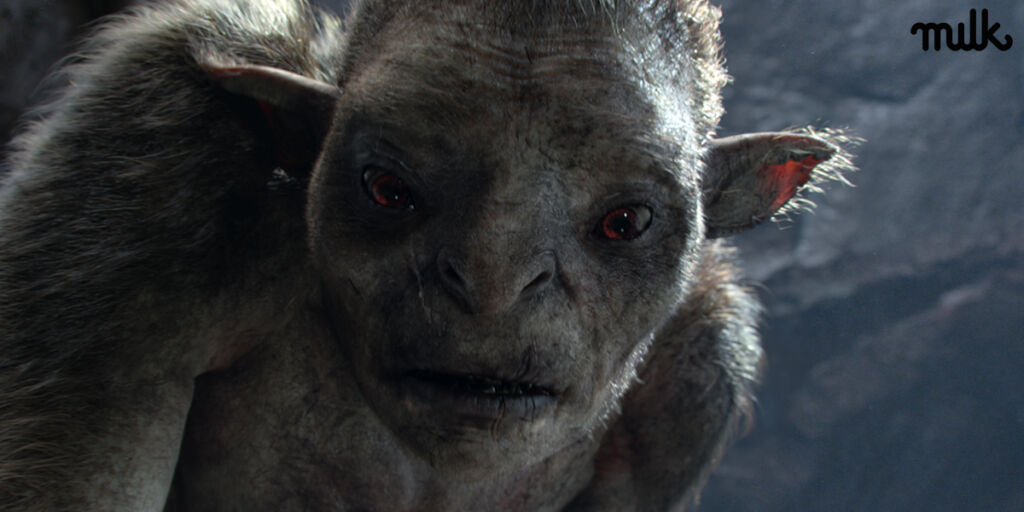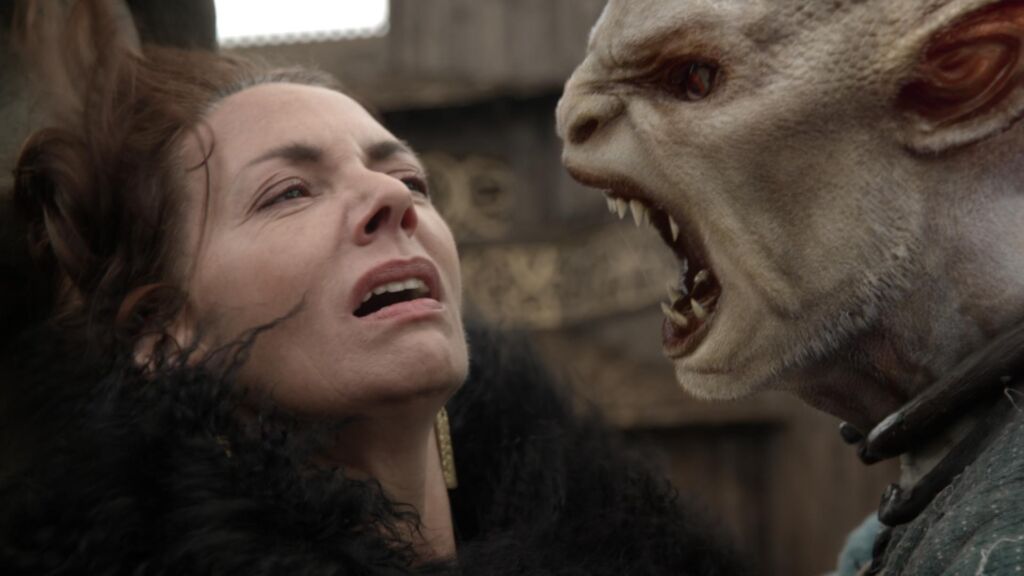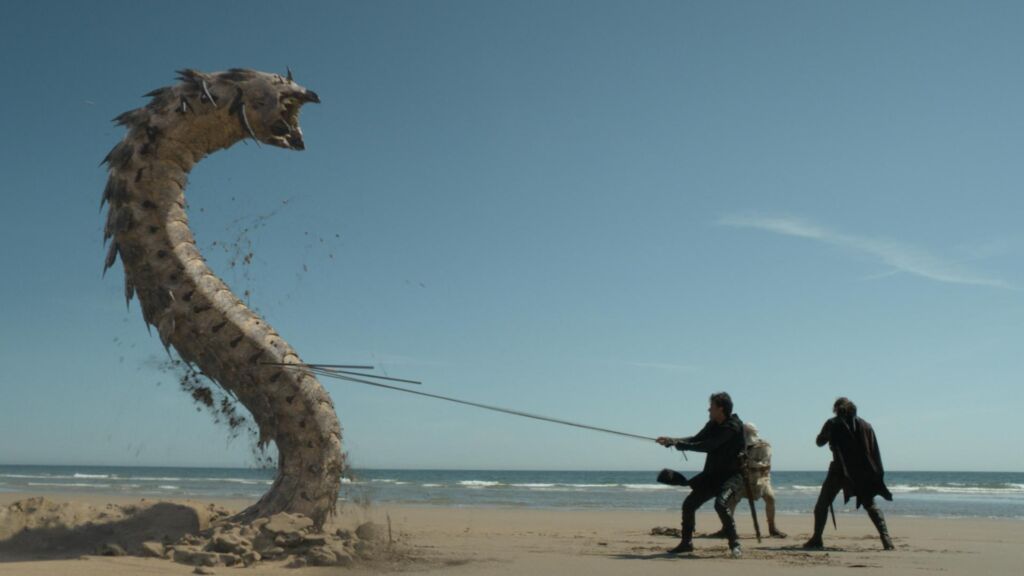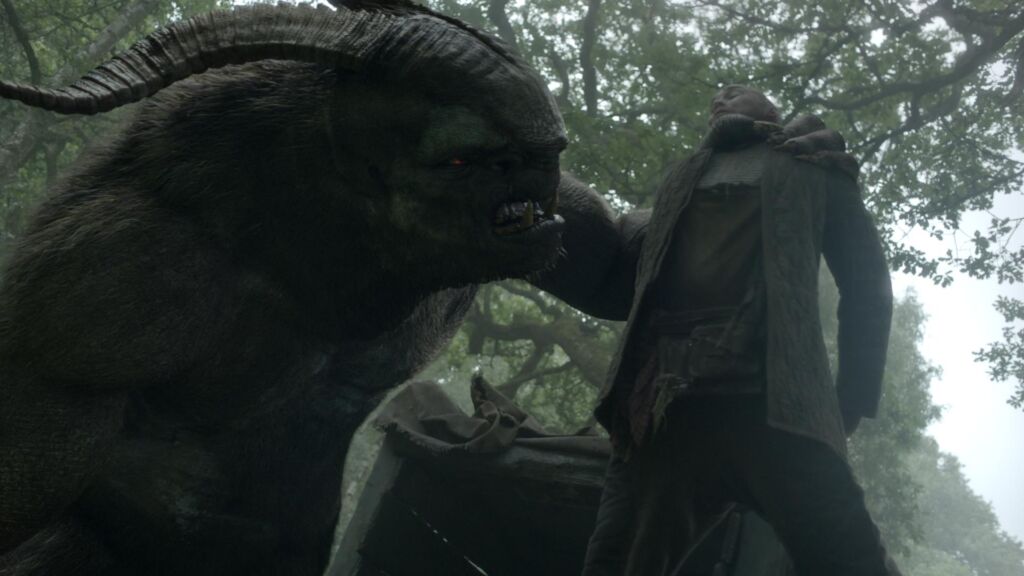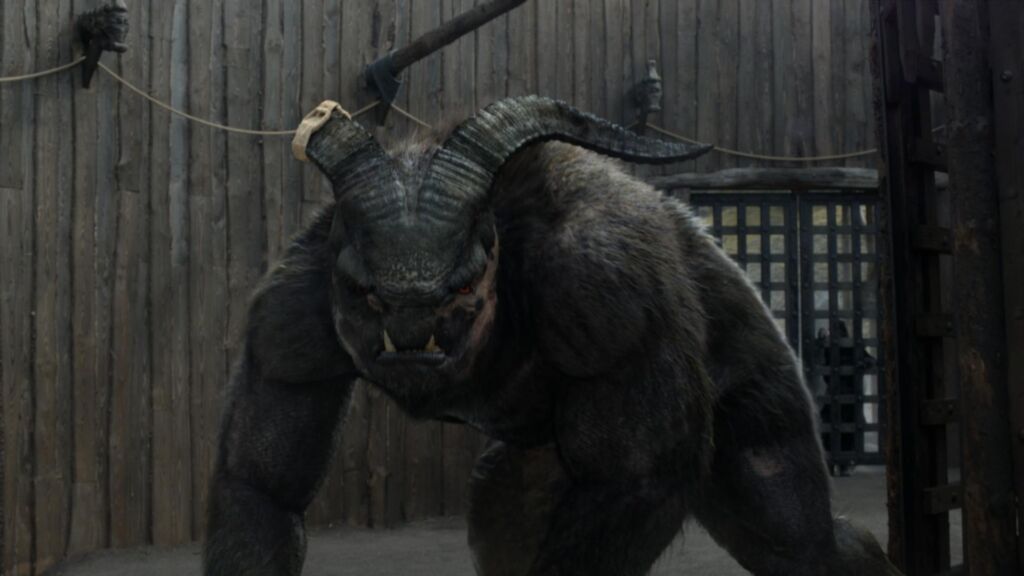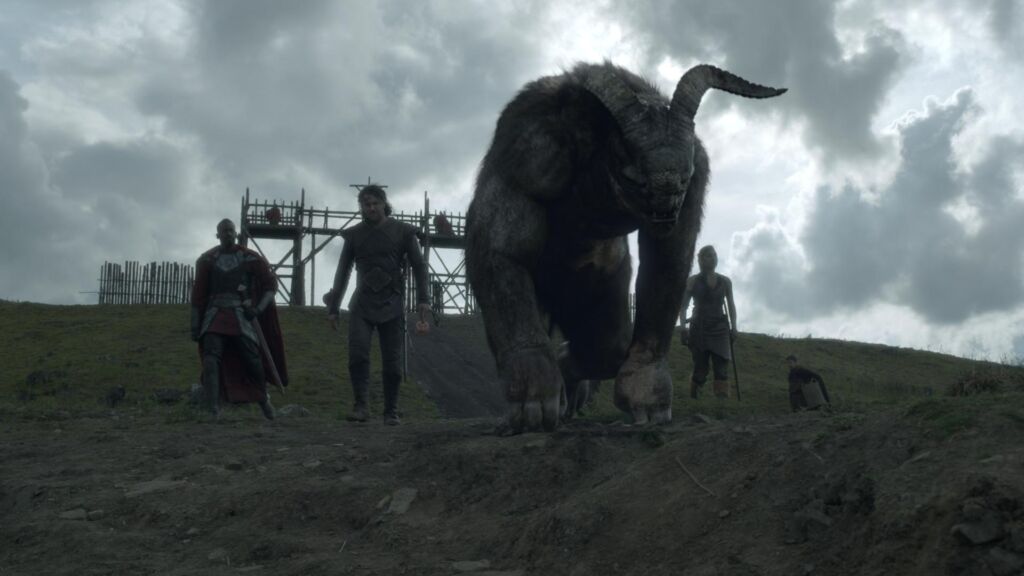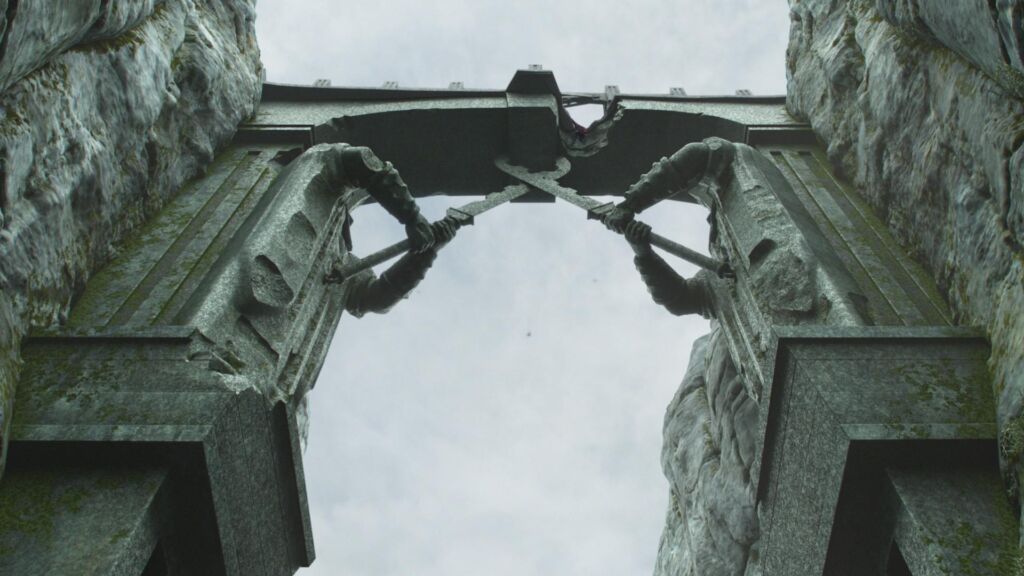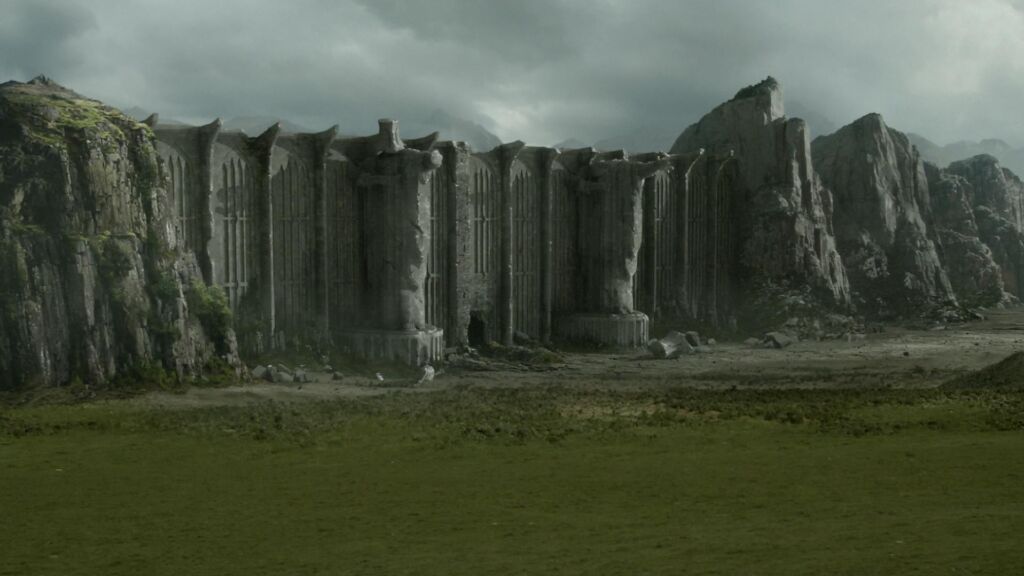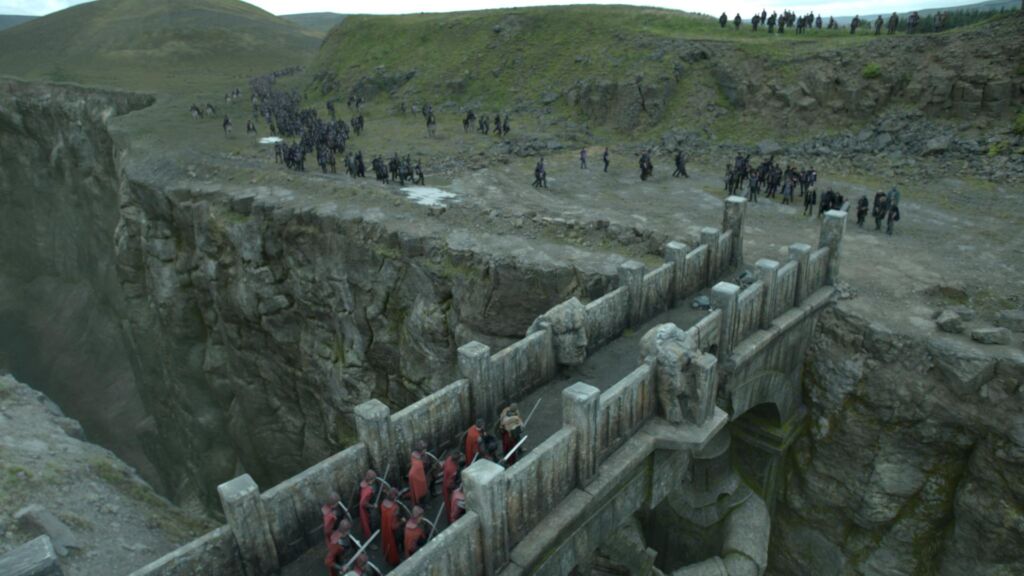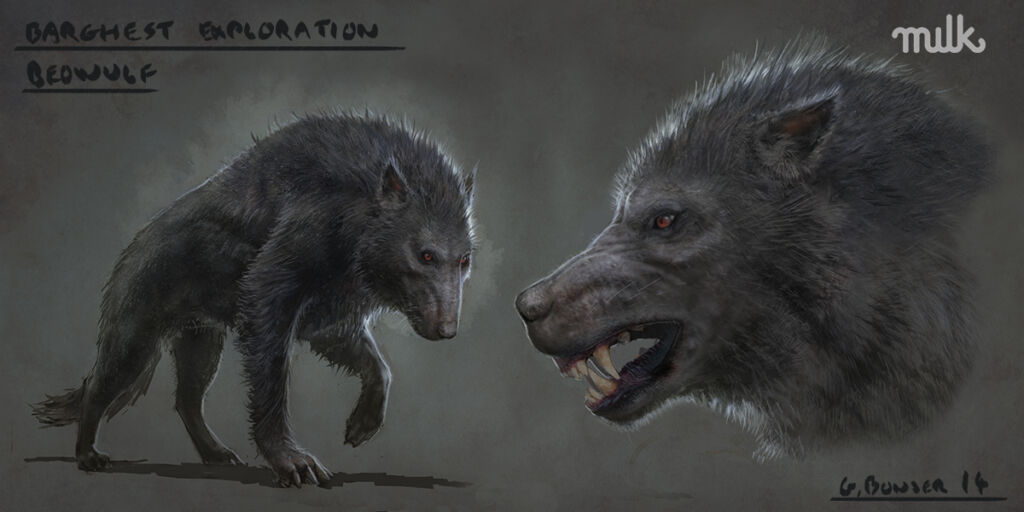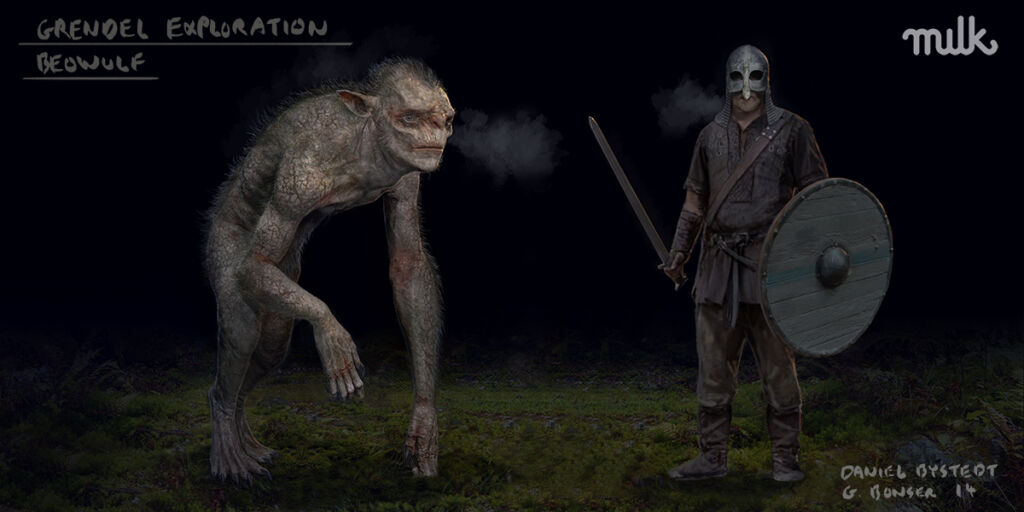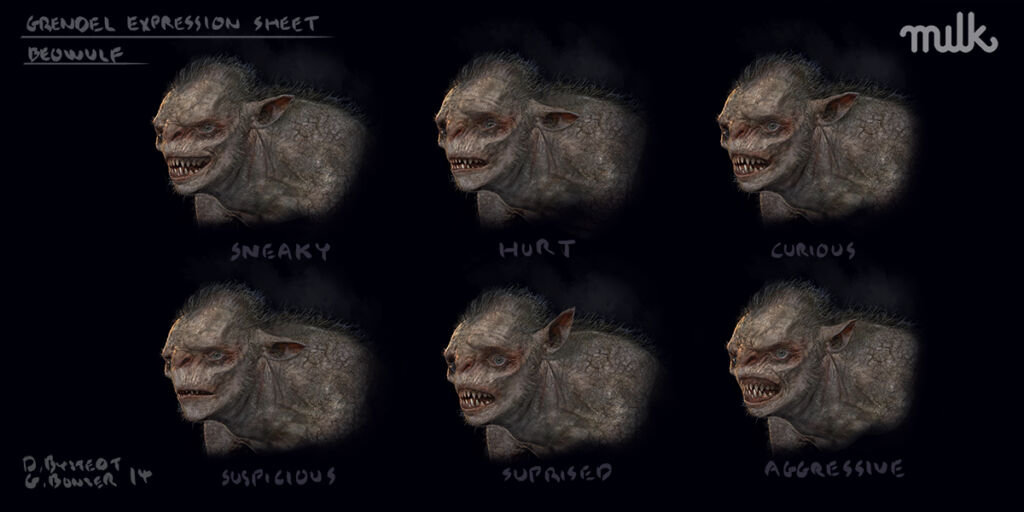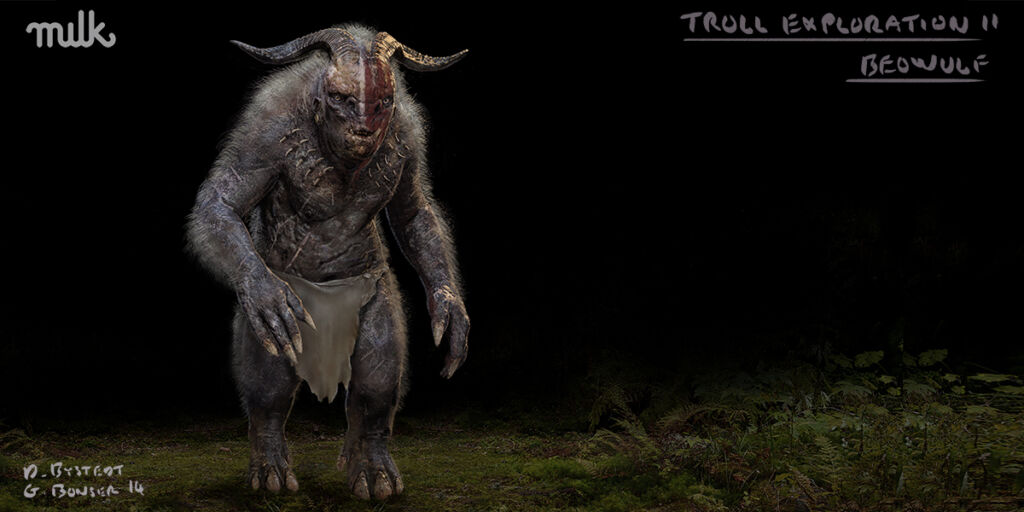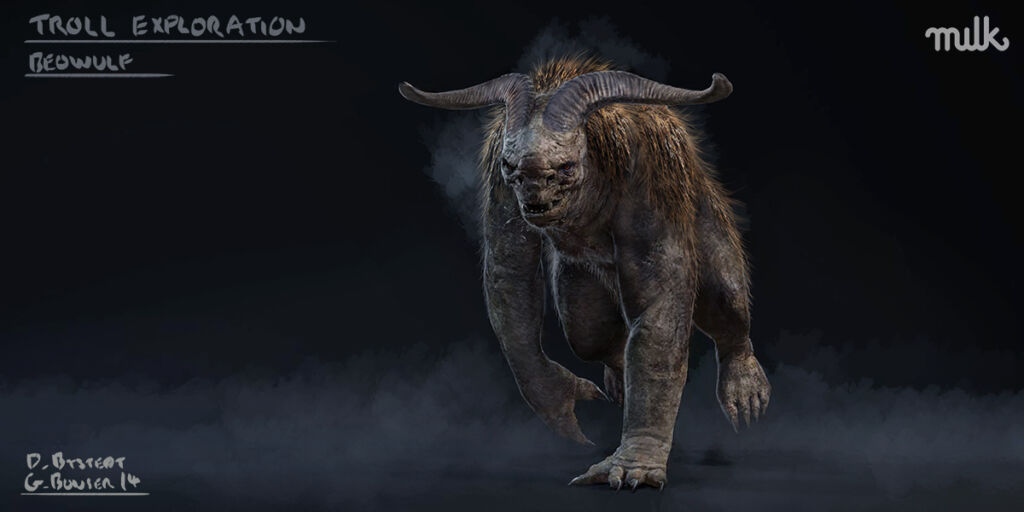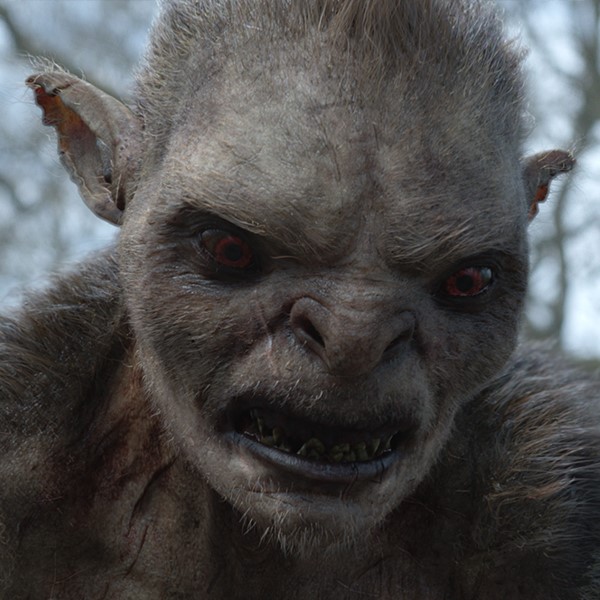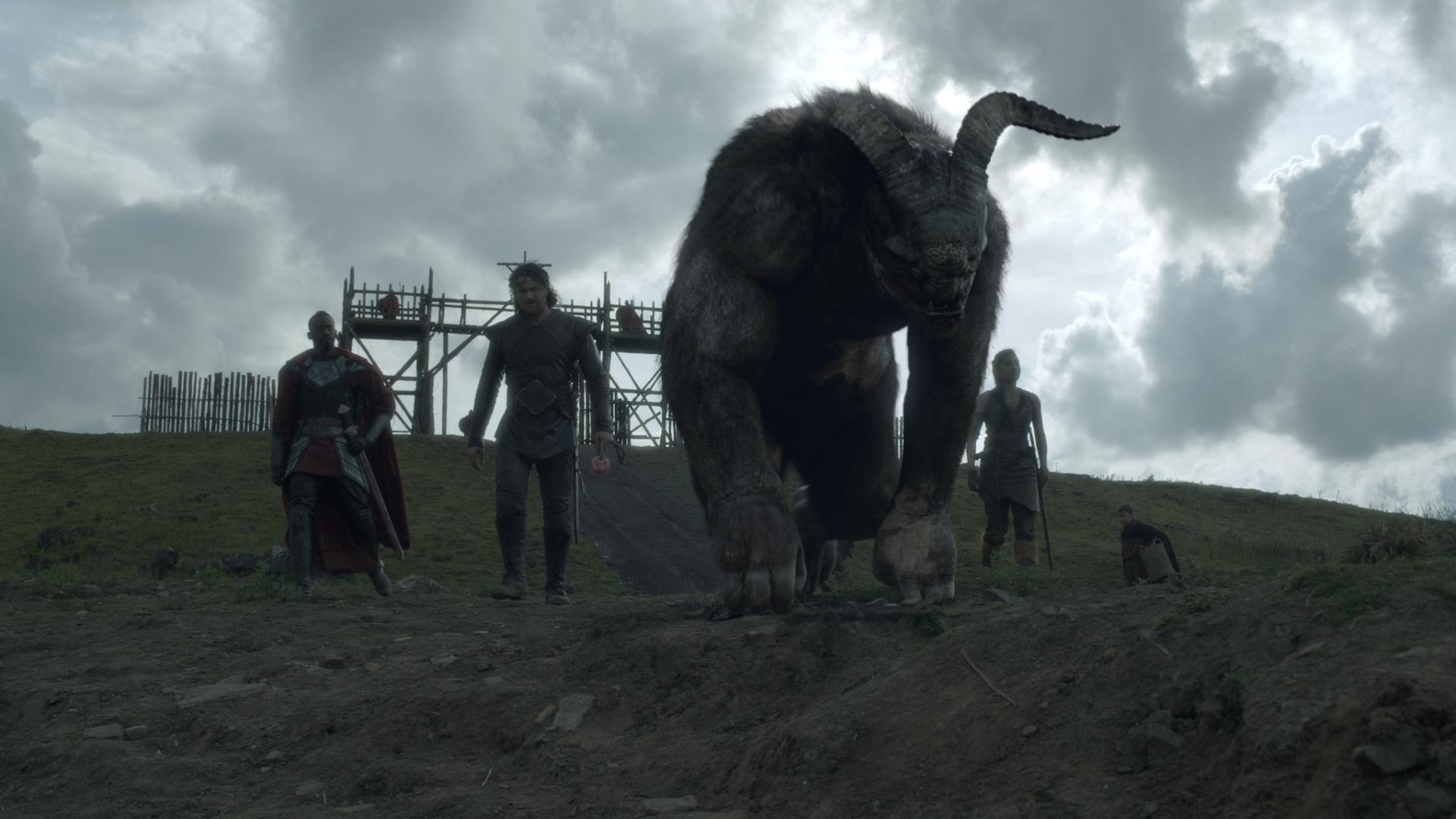Milk created key visual effects (1500 visual effects shots) for Beowulf Return to the Shieldlands– ITV’s action-packed, twelve-part reimagining of the epic Anglo-Saxon poem for television.
Beowulf is set in the mythical Shieldlands, a place of spectacle and danger, which is populated by both humans and fantastical creatures.
Milk brought to life a range of full CG creatures – including Beowulf’s adversary Grendl and a wide supporting cast of domestic and wild trolls – as well as environments, set enhancements and effects work across the series. This was done over a period of twelve months.
VFX brief & challenges:
Milk worked on character development for the creatures from concept design by Milk’s in house concept artists through to final shot. The team then worked to develop the physical attributes and bring to life each creature – according to each creature’s mythical environment, habits and story – from muscles, to skin hair and key features and characteristics. Tim Haines’ – ITV Studios creative director of drama- brief was that the CGI creatures should have a ‘real world’ feel to them.
Grendl
ITV’s brief for Grendl was a half human, half monster, who inhabits the dark hinterland between the human inhabitants of the Shieldlands and the Mudborn creatures from whom they conquered it hundreds of years before. A thing of the dark, Grendl is searching for a place to belong.
Performance – Ensuring Grendl was sufficiently likeable and elicited maximum audience empathy required a gradual and painstaking process by the Milk creature team. We animated Grendl’s ears to maximise his personality. They have an endearing, childlike quality, which helps dial up empathy and youth.
Grendl’s scenes are very interactive with the other actors especially the main characters Beowulf and Elvina. As a result he was shot as a full performance character with an actor in a green-screen suit throughout. This ensured a better level of reaction for the actors. Milk’s animation team used the green suit performances as reference to pick out the subtleties of movement as they re-created the entire performance digitally. This approach also allows the creature to play off against the actor: if she touches him and he winces, you’re getting real interaction. For TV, it’s a rare thing to do a full creature that’s interactive and emotional with another actor.
Modelling and texturing- Grendl was designed to be very svelte and muscular to survive in the harsh Shieldlands environment. He is quick and flexible in order to be able to escape or fight and very threatening at his full 9 feet height. Our rigging and animation teams did a succession of muscle tests to ensure we got his movement absolutely right.
Grendl’s skin texture and appearance was developed to show both his wildness and his vulnerability. His skin needed to be weather-beaten but tough. To achieve this we referenced elephant skin as well as bears and other wild creatures. To add a level of vulnerability we wanted to have patches of dryness and sores. We looked into a variety of animal skin conditions such as alopecia to create the desired look. Adding a layer of fur and hair then softened the overall look.
Fur and grooming- Most creatures in Beowulf has some form of CG fur or hair – which needed to be interactive, dynamic and able to move realistically in all environments. This made Beowulf one of Milk’s most ambitious projects in terms of the volume of shots requiring complex fur treatment. In order to accomplish the quantity required, we built a new pipeline around fur software plug-in Yeti.
We created an underlying groom ‘preset’ from which the final fur would be generated. This even included small particles of dirt that sat in the fur or in the case of the Barghest, leaves. The challenge was to achieve realistic tension displacement between the movement of the model and the layer of fur so we ran the groom over an animated model to get the best dynamic settings.
Eyes- All our creatures have ‘Mudborn’ ancestry and share the feature of red eyes. Given that none of the Beowulf creatures speak, the eyes are a key element in unlocking expression. We therefore paid particular attention to creating eyes that could communicate a range of emotion and connect with our audience particularly in the case of Grendl. As a result, the irises and pupils were designed and developed by our lookdev team with painstaking detail. This included the ability to control the dilation of the pupils and the specular level of reflection off the eyeball.
Trolls
ITV’s brief for the Trolls was to create powerful creatures, which stand about ten feet tall when fully grown, and tower over humans. They have large ridged horns growing from thickened skulls.
Ultimately each creature had to feel like a completely natural part of the Shieldlands environment. Thus the wild trolls have war-paint markings, scars and blemishes on their skin. In order to visually distinguish Herot’s captured troll from his wild counterparts, we gave him different features – removing the war markings and adding skin blemishes and a damaged horn.
Shooting scenes with the trolls was achieved in a similar manner to Grendl’s shots. However as the trolls are quadrupeds the green-screen actors had to wear stilts and crutches to get the four-legged look.
A high level of interaction with the human characters was required and with our captured Troll, we wanted to create an additional layer of emotional response to his captivity. We used the actor to aid positioning and help the actors respond effectively. This in turn helped us guide the edit choices so that we could use shots to the best advantage. We kept the camera moving where possible and allowed time for the Troll to react with facial expressions and body movement as much as possible, so that the audience could engage effectively with him. Successfully presenting the strength, weight and power of the Troll was also key to the believability of the performance.
Sand Wyrm
ITV briefed Milk to create a giant, hard-shelled ‘armoured’ worm-like creature which lives in the sand on the beaches of the Shieldlands. Key design aspects that Milk developed included the need to be able to burrow through the sand at speed, bend like a worm and emerge to threaten and attack.
We had to create realistic interaction between the Wyrm and the sand. When it burrowed it needed to have a fixed point and push the sand around it, creating cracks in the surface as it moved– which had to be digitally enhanced rather than achieved practically. Our point of reference for this was the film ‘Tremors’. Our effects team used a technique to make the sand break up and crack, which involved sand particle work.
In one sequence Beowulf and other human characters attack the Wyrm with spears that have ropes attached. In order to create believable interaction between the actors and the Wyrm, we built a scaffold rig to match the height of the worm we slung a rope over the rig in order for crew members to pull the rope taut and provide the actors with a physical force to pull against. We then digitally lined up and enhanced the practical rope and attached it to the CG Wyrm. We then animated the creature it according to how the actors moved with the rope.
Pandiri fish
Milk designed and created CG ‘Pandiri’ fish and animated them swimming in a river. We created both underwater and aerial shots of the fish in the river. Our effects team digitally enhanced the practical water in order to ensure a realistic interaction between the water and the fish.
The set and environments
The environments chosen for the series shoot including the main base in the Pennines created an amazing natural backdrop. Milk’s digital matte painting and compositing teams were tasked with enhancing, augmenting and creating occasional additional detail such as mountain ranges and structures, for example the giant ruins of ‘Hoc’ the place where we first meet Grendl as well as enhancements such as CG bridges and crowd work.
- Directors
Jon East, Julian Holmes, Marek Losey, Stephen Woolfenden & Kerric Macdonald - Producers
James Dormer, Tim Haines, Katie Newman & Stephen Smallwood - Production Company
ITV Studios - Distributor
ITV - Milk VFX Supervisor
Jean-Claude Deguara - Milk VFX Producer
Clare Norman - Release Date
3 January 2016
